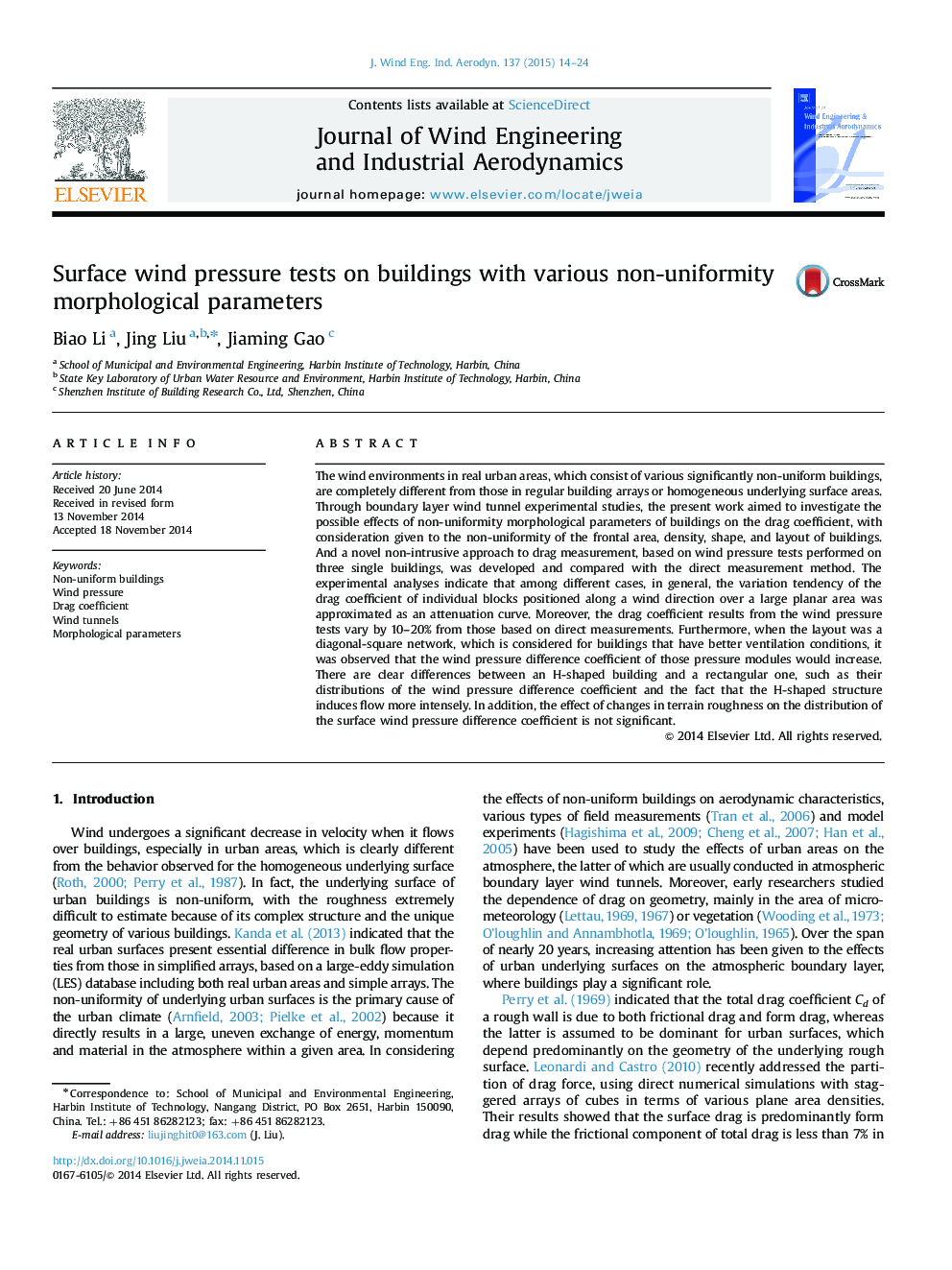| Article ID | Journal | Published Year | Pages | File Type |
|---|---|---|---|---|
| 6757605 | Journal of Wind Engineering and Industrial Aerodynamics | 2015 | 11 Pages |
Abstract
The wind environments in real urban areas, which consist of various significantly non-uniform buildings, are completely different from those in regular building arrays or homogeneous underlying surface areas. Through boundary layer wind tunnel experimental studies, the present work aimed to investigate the possible effects of non-uniformity morphological parameters of buildings on the drag coefficient, with consideration given to the non-uniformity of the frontal area, density, shape, and layout of buildings. And a novel non-intrusive approach to drag measurement, based on wind pressure tests performed on three single buildings, was developed and compared with the direct measurement method. The experimental analyses indicate that among different cases, in general, the variation tendency of the drag coefficient of individual blocks positioned along a wind direction over a large planar area was approximated as an attenuation curve. Moreover, the drag coefficient results from the wind pressure tests vary by 10-20% from those based on direct measurements. Furthermore, when the layout was a diagonal-square network, which is considered for buildings that have better ventilation conditions, it was observed that the wind pressure difference coefficient of those pressure modules would increase. There are clear differences between an H-shaped building and a rectangular one, such as their distributions of the wind pressure difference coefficient and the fact that the H-shaped structure induces flow more intensely. In addition, the effect of changes in terrain roughness on the distribution of the surface wind pressure difference coefficient is not significant.
Related Topics
Physical Sciences and Engineering
Energy
Renewable Energy, Sustainability and the Environment
Authors
Biao Li, Jing Liu, Jiaming Gao,
